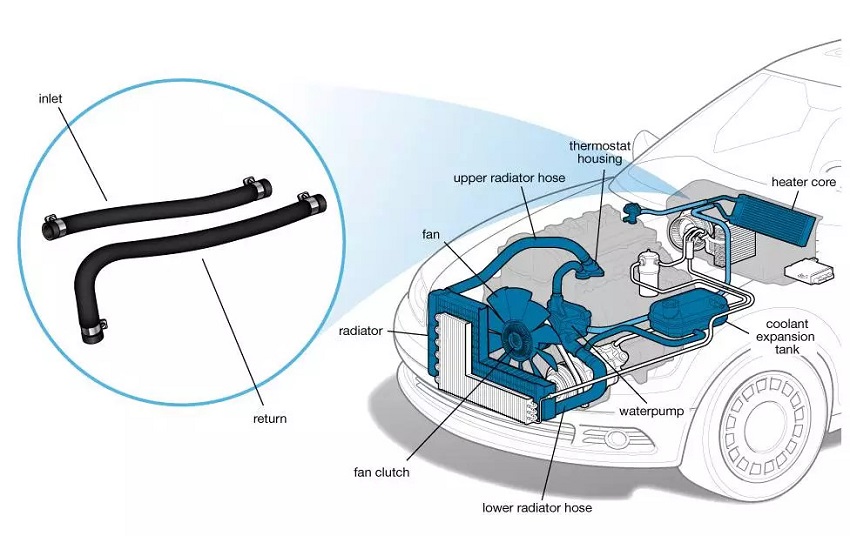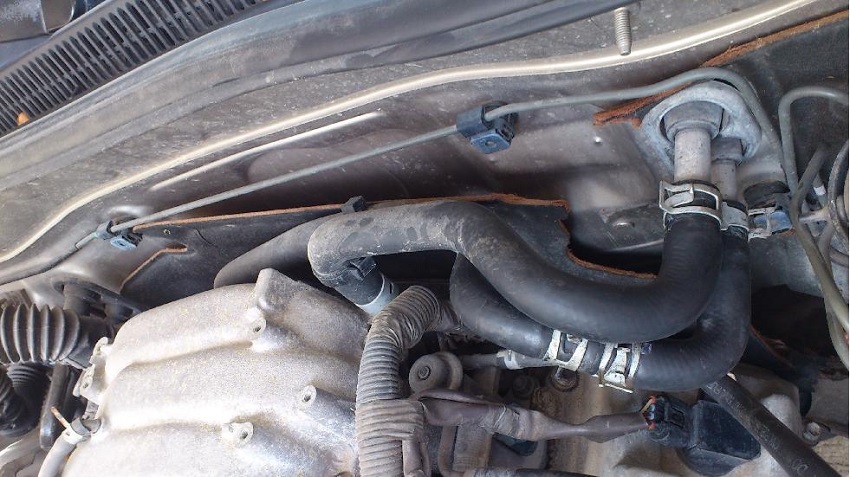Where are the Hoses on a Heater Core?

If you’ve ever wondered about the inner workings of your car’s heating system, you may have come across the term “heater core.” The heater core plays a crucial role in keeping you warm during those chilly winter drives, but have you ever wondered where the hoses on a heater core are located? In this comprehensive guide, we’ll dive into the details of the heater core, its components, and the location of the hoses that keep it running smoothly. So, let’s get started and unravel the mysteries behind the heater core! This article is provided by buzzymoment.com
Understanding the Heater Core
Before we delve into the hose locations, let’s understand what a heater core actually is. The heater core is an integral part of your vehicle’s heating and cooling system. It works in conjunction with the engine’s cooling system to provide warm air for the cabin when you turn on the heater.
The heater core is typically a small radiator-like unit made of metal, and it resembles a tiny version of your car’s radiator. It is usually located behind the dashboard on the passenger side of the vehicle. When hot coolant flows through the heater core, the fan blows air over it, resulting in warm air that is then circulated into the cabin, keeping you and your passengers cozy during winter drives. Look at the heater core hose diagram.
Locating the Heater Core Hoses
Now that we have a basic understanding of the heater core, let’s explore the location of the hoses that are connected to it. The heater core has two hoses attached to it, which play a vital role in the heating process. These hoses serve as the pathway for the coolant to flow in and out of the heater core.
1. Inlet Hose
The first hose, known as the inlet hose, carries hot coolant from the engine’s cooling system into the heater core. This hose is responsible for supplying the heater core with the warm coolant needed to generate heat for the cabin. The inlet hose is usually connected to the top or side of the heater core.
2. Outlet Hose
The second hose is the outlet hose, and it carries the now cooled-down coolant away from the heater core and back into the engine’s cooling system. This hose completes the coolant’s circuit, allowing it to continuously circulate between the heater core and the engine. The outlet hose is typically connected to the bottom or opposite side of the heater core from where the inlet hose is attached.
Potential Challenges and Maintenance
While the heater core is a durable component, it can face some issues over time due to wear and tear or other factors. Some common challenges associated with the heater core include:
1. Heater Core Clogs
As with any cooling system, the heater core can become clogged with debris, rust, or other contaminants over time. This can obstruct the flow of coolant, resulting in reduced heating performance or no heat at all. Regular coolant system flushes can help prevent clogs and keep the heater core functioning optimally.
2. Heater Core Leaks
Since the heater core is made of metal, it can develop leaks due to corrosion or physical damage. A leaking heater core can lead to coolant leakage inside the cabin, causing a sweet-smelling fog on the windshield and reduced coolant levels. If you suspect a leak, it’s essential to have it inspected and repaired promptly.
3. Heater Control Valve Issues
The heater control valve regulates the flow of hot coolant into the heater core. If the valve malfunctions or gets stuck, it can prevent warm coolant from reaching the core, resulting in a lack of heat inside the cabin. Replacing a faulty heater control valve is a common repair to restore proper heating.
Conclusion
Understanding the location and function of the hoses on a heater core is essential for maintaining the heating system of your vehicle. The inlet and outlet hoses play a crucial role in ensuring that warm coolant flows through the heater core, providing you with the comfort you need during cold weather.
Regular maintenance, including coolant system flushes and timely repairs, is vital to keep your heater core functioning efficiently. If you ever face heating issues in your vehicle, it’s best to consult a qualified mechanic who can diagnose and resolve the problem to ensure your driving experience remains comfortable and enjoyable.
So, the next time you enjoy the warmth of your car’s heater on a chilly day, remember the small but significant heater core and the hoses that make it all possible!








